Note: This website was automatically translated, so some terms or nuances may not be completely accurate.
Art never lies.
This series explores the secrets behind "vibrant companies" with "originality," as uncovered by Dentsu Inc.'s "Company Design" team. The 42nd installment focuses on Startburn, a company gaining attention for its business model that fuses "art" and "NFTs (non-fungible tokens based on blockchain technology)"—two concepts often challenging for non-specialists to grasp. We couldn't contain our excitement and anticipation before the interview, wondering what insights President Shii would share.
Written by: Fumihiro Tsukamoto (Dentsu Kyushu Inc.)
When you hear "blockchain," isn't the first thing that comes to mind "cryptocurrency"? It's not something tangible like paper money or coins; it's a system that operates solely within the "virtual world." What it demands is "trust" and "credibility." It instantly establishes the value of something, recognized worldwide, and permanently. This is where "art" comes in. I was thrilled by the arrival of this black ship that could revolutionize the history of the art world.
At the same time, it also feels frightening. Stories like Van Gogh paintings selling for hundreds of millions of yen sound less like dreams and more like something slightly terrifying. Art and money, artistic culture and socio-economics. How will President Shii respond to this complex issue?
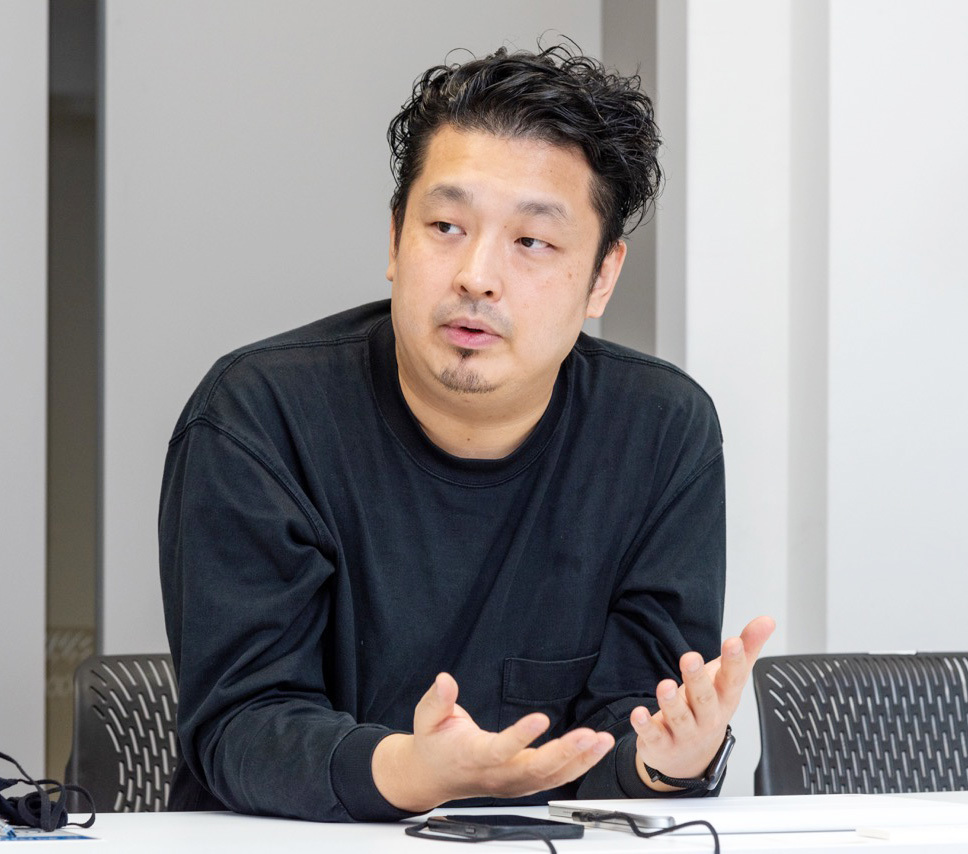
Tahei Shii: President and CEO, Startbahn
Born in 1977. Graduated from Tama Art University's Painting Department, Oil Painting Major, in 2001. Began creating artworks themed around "Art in the Internet Age." In 2006, invented a system where artists receive royalties when their artworks are resold, obtaining patents in Japan and the US. Lecturer at Tokyo University of the Arts from 2007 to 2011. Founded Startburn Inc. in 2014 while enrolled in the University of Tokyo Graduate School. Uses the name Taihei for his activities as an artist. Recipient of numerous awards including the Tadao Ando Prize at Geisai#9 and the Holbein Scholarship. Major publications include "New Forms of Art: What Will NFT Art Change?" (Heibonsha Shinsho).
The Myth That the Art World Is Technologically Illiterate
"Don't you think there's this image that the art world and artists are generally unfamiliar with cutting-edge technology?" President Shii opened the interview with this statement. Indeed, the image can be one of a craftsman's world, like "Digital? I don't trust that stuff! I pour my soul into a single paintbrush!" "But, for example, imagine the Renaissance era. Science and technology underwent tremendous evolution. Alongside that, art evolved too. The art world and artists have always been sensitive to the idea that major shifts in the times could be an opportunity to update art."
President Shii continued, "With the arrival of the information society, I believed an artistic update was inevitable. However, traditional art was fundamentally analog. Therefore, I felt a 'foundation' for distributing art digitally would absolutely be necessary." Ah, a foundation... So that's why blockchain.
That said, building a new foundation isn't something that happens overnight. It requires societal understanding, empathy, and anticipation. It's easy to imagine the numerous hardships he must have faced from founding the company in 2014 until getting the business on track.
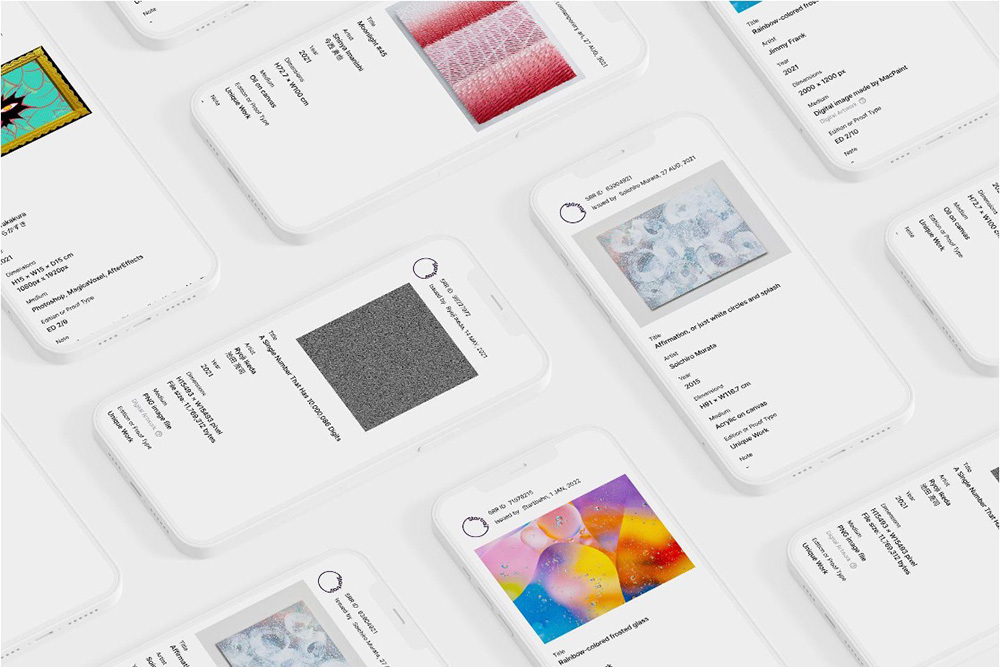
"Artists" dislike money. This is probably true.
"So, the real bottleneck, or hurdle, is that artists fundamentally dislike money," says President Shii. I thought this was a crucial point. Certainly, some artists happen to ride the wave and earn enormous sums. But they are absolutely not creating works for the sake of "making money." In fact, there's no story of Van Gogh being wealthy during his lifetime.
"When I proposed to these people, or to the industry, 'Why not effectively utilize NFTs and blockchain?', I was met with misunderstandings like, 'Who the hell are you? A money-grubbing bastard? A disruptor trying to destroy the gallery system and the art business?' That was the struggle when we first started the company, and it continues even now."
But here's the thing, President Shii continues. "A gap in understanding is emerging between those who recognize this system's potential value and those who don't. This trend has fueled what some call the 'digital art bubble.' But that wasn't what I wanted to do. Amidst the chaos where people's understanding of NFTs varied wildly, I ended up spending every single day just explaining what NFTs were." This is profound. As someone who works in advertising, I fully understand the dynamism and terror when the world suddenly shifts into high gear.
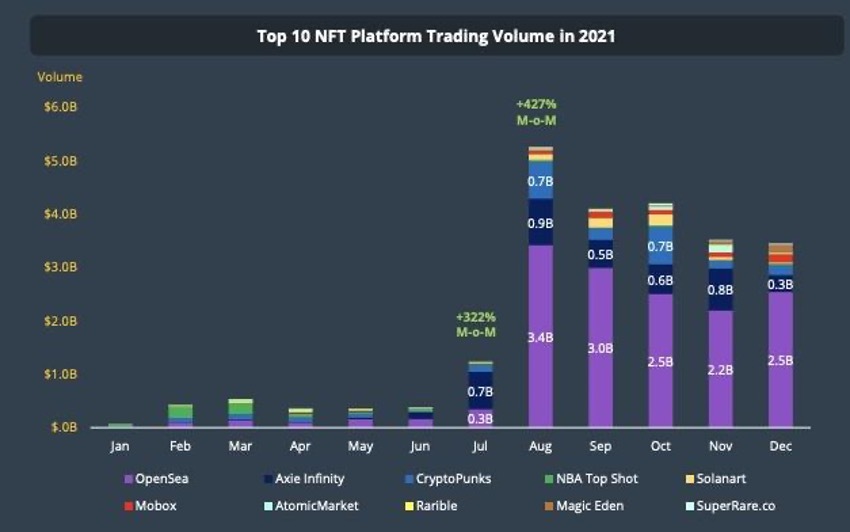
Did COVID change the history of art?
President Shii reflects that the pandemic was the catalyst for the digital art bubble. "Those involved in valuing art found themselves in a situation where they could no longer ignore digital. Or perhaps it's more accurate to say they were made aware of the true value of digital." Indeed, whether it's procuring daily necessities or communicating with others, the question of how we should live in this pandemic world is something everyone has pondered during this experience. It's easy to imagine the shockwaves that hit the art industry. With all events canceled, exhibition spaces for artworks, for example, must have been deserted.
"But I don't think this situation is necessarily all pessimism. Using NFTs, you can involve people from all over the world in the auction of a single artwork. Where in the analog world, it might have been a gathering of dozens of expert buyers, now people from anywhere in the world can participate." I was starting to understand what President Shii was getting at.
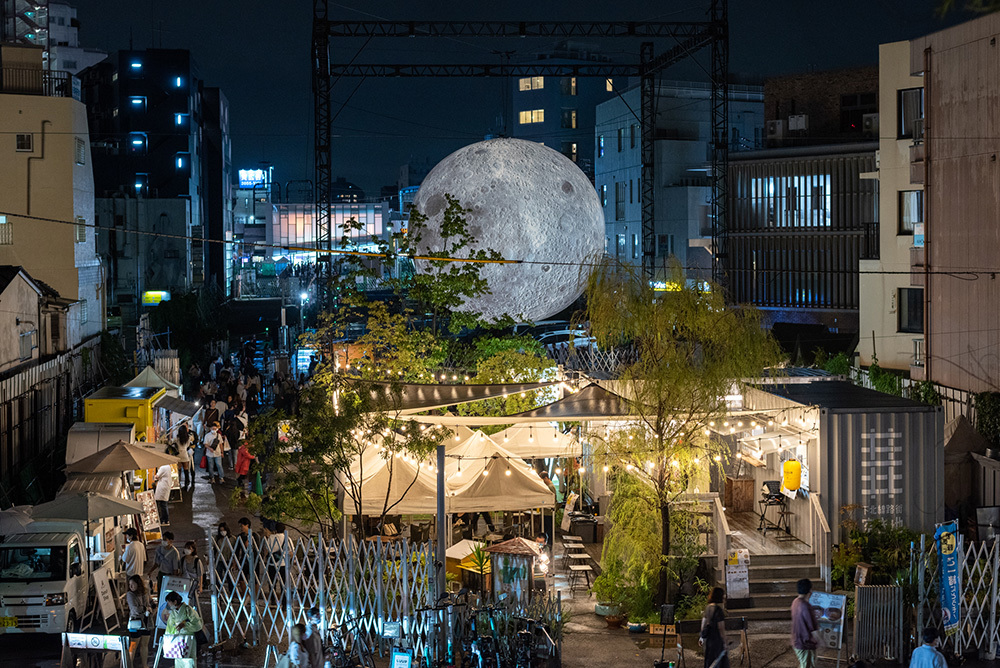
How do you engage people and society?
President Shii emphasizes that "free access and speed" are crucial for engaging people and society. "When spreading a new service throughout society, the greatest incentive is that it's free and enjoyable. Speed is also key. If logging in or creating an account takes an excessive amount of time, people won't feel inclined to try it casually. If a cumbersome process can be done in just 25 seconds, then people might think, 'Well, maybe I'll give it a shot.'" President Shii's insight deepens here. "To build that system, we need to involve society as a whole, including government and businesses. For that, I believe it's crucial to present a long-term perspective—a balance sheet (B/S) kind of timeframe—rather than focusing on short-term results judged by things like profit and loss (P/L)."
Campaigns like "Get it now while it's free!" or "Unbeatable speed!" are common across all industries. But what's often missing is the perspective of "long-term time," isn't it? I felt this was especially important to present when it comes to art. President Shii's vision—to create a system where artists are properly compensated and the value of artworks is correctly preserved—carries profound persuasive power.
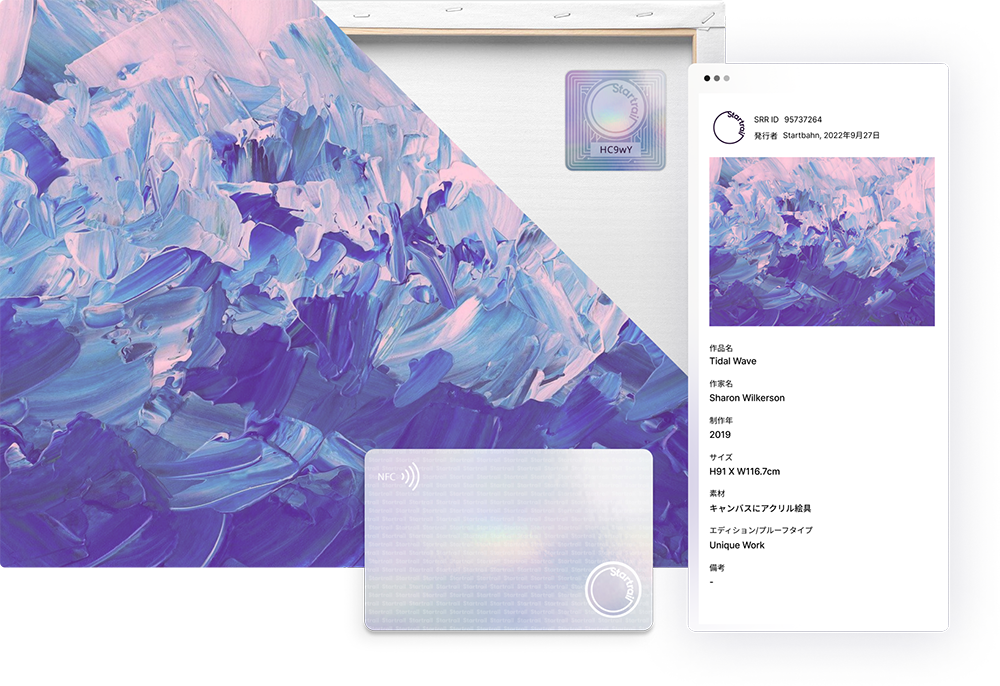
Art isn't something to close; it's something to open.
President Shii states that to invigorate the art industry, while permeating the system is important, broadening its base is crucial. "It's like the number of participants in sports. I believe the art industry isn't special; it's no different from soccer or baseball." For example, parts of the soccer industry already use a structure similar to blockchain-based rebate payments. When a pro soccer team signs a player, a system is in place to send rebates to the club teams or schools that developed that player. This creates incentives for the developmental layers that typically go unrewarded. As a result, the entire industry becomes more vibrant and the level rises. What's important is that the players (their performance), meaning the artists and their works, reach a much, much wider audience."
Traditionally, the art industry has tended to restrict distribution channels to ensure proper management, thereby limiting access to art. NFTs simplify the verification of authenticity, potentially unlocking the value of previously closed-off art and serving as a driver to broaden the base. "Some voice concerns, asking if the value of art might decline as the number of artists and works increases. I don't believe that will happen. The broader the base, the higher the peak becomes. I believe this expands the potential for new superstars to emerge. My vision is a world where superstars emerge not just from major cities, but from small villages no one has ever heard of." A world open to everyone, where opportunity exists for all—that is the ideal state.
"The art world, frankly, keeps repeating foolish history. By 'foolish,' I mean how conservative people dismiss new things as tacky. Impressionism, for instance, was utterly rejected in its time. As someone who aspires to be an artist, I absolutely don't want to create something that future generations will call tacky." It's about wanting to possess a discerning eye that can truly judge a work's worth.
"In Picasso's time, technology wasn't advanced enough, so he had to shout about his genius. From now on, the connection between artworks and the public will change. I think it's crucial for artists to create the most real, unadulterated state. It's a bit of a gut feeling, but..." Art must contain no falsehood. In this final comment of the interview, we glimpsed President Shii's thoughts as an artist.


Startburn's website is here.

This series explores the secrets behind "vibrant companies" possessing "originality," investigated by Dentsu Inc.'s "Company Design" team. In the 42nd installment, we introduced Startburn, a company gaining attention for its business fusing "art" and "NFTs."
Season 1 of the series can be found here.
The "Company Design" project site is here.
[Editor's Note]
At the end of the interview, Shinji Muto, the creative director for this series, posed this question: "When it comes to enjoying art, I feel Japan is still an immature society, or perhaps the democratization of art is lagging. What are your thoughts on that, President Shii?" As an editor, I had actually prepared the same question. For example, in Europe, there's a custom where you introduce yourself to guests visiting your home for the first time by showing them your favorite painting. It feels like a very culturally mature practice.
Mr. Shii's answer was this: "I suppose the breadth of the base is still insufficient. Increasing the number of players is important, but I think the key is information. If the volume of circulating information increases, just as people can name their favorite soccer player, they'll also be able to name their favorite artist." He meant that exposure to a lot of art sharpens one's sensibility and helps one understand their own preferences.
During the discussion on Impressionism, President Shii also mentioned that what he is doing now is important "as a question (for society and the future)." Beyond his roles as a manager, engineer, and artist, one could sense a journalistic perspective in his words.
Was this article helpful?
Newsletter registration is here
We select and publish important news every day
For inquiries about this article
Back Numbers
Author

Tsukamoto Fumihiko
Dentsu Kyushu Inc.
Integrated Growth Planning Bureau Growth Planning Department
Producer/Planner
Responsible for marketing and branding support for partner companies. As part of a regional value discovery project in collaboration with Dentsu Kyushu Inc. Regional Value Co-creation Bureau, also engaged in marketing support for startups aligned with Fukuoka's rising startup momentum. Additionally involved in experimental projects applying art thinking to business growth and regional environmental conservation initiatives. Supporting business-oriented projects, he assists in managing film production committees and regional e-sports associations. His diverse activities span content production, including planning and operating urban citizen marathons with sponsor marketing, branding and marketing for international sports events, and producing ceremonies.



